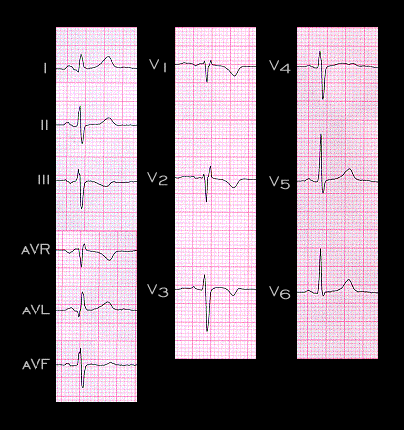
The ECG shown here is another example of the non-specificity of T wave changes. It is from a 16 year old female with no evidence of heart disease. Inverted T waves in leads V1, V2 and V3, although similar to those that might follow an ischemic event, commonly occur in younger individuals with no evidence of heart disease and may extend into V4. These inverted T wave are referred to as “persistent juvenile pattern” and usually become upright by the age of 20
